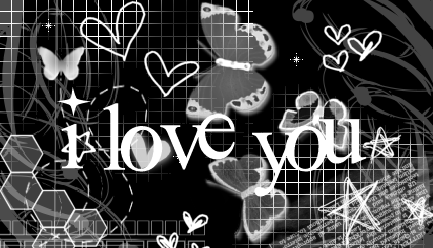| Source:- Google.com.pk |
Main article: Biological basis of love Biological models of sex tend to view love as a mammalian drive, much like hunger or thirst. Helen Fisher, a leading expert in the topic of love, divides the experience of love into three partly overlapping stages: lust, attraction, and attachment. Lust is the feeling of sexual desire; romantic attraction determines what partners mates find attractive and pursue, conserving time and energy by choosing; and attachment involves sharing a home, parental duties, mutual defense, and in humans involves feelings of safety and security. Three distinct neural circuitries, including neurotransmitters, and three behavioral patterns, are associated with these three romantic styles.Lust is the initial passionate sexual desire that promotes mating, and involves the increased release of chemicals such as testosterone and estrogen. These effects rarely last more than a few weeks or months. Attraction is the more individualized and romantic desire for a specific candidate for mating, which develops out of lust as commitment to an individual mate forms. Recent studies in neuroscience have indicated that as people fall in love, the brain consistently releases a certain set of chemicals, including the neurotransmitter hormones, dopamine, norepinephrine, and serotonin, the same compounds released by amphetamine, stimulating the brain's pleasure center and leading to side effects such as increased heart rate, loss of appetite and sleep, and an intense feeling of excitement. Research has indicated that this stage generally lasts from one and a half to three years.Since the lust and attraction stages are both considered temporary, a third stage is needed to account for long-term relationships. Attachment is the bonding that promotes relationships lasting for many years and even decades. Attachment is generally based on commitments such as marriage and children, or on mutual friendship based on things like shared interests. It has been linked to higher levels of the chemicals oxytocin and vasopressin to a greater degree than short-term relationships have. Enzo Emanuele and coworkers reported the protein molecule known as the nerve growth factor (NGF) has high levels when people first fall in love, but these return to previous levels after one year.Psychological basis urther information: Human bonding Psychology depicts love as a cognitive and social phenomenon. Psychologist Robert Sternberg formulated a triangular theory of love and argued that love has three different components: intimacy, commitment, and passion. Intimacy is a form in which two people share confidences and various details of their personal lives, and is usually shown in friendships and romantic love affairs. Commitment, on the other hand, is the expectation that the relationship is permanent. The last and most common form of love is sexual attraction and passion. Passionate love is shown in infatuation as well as romantic love. All forms of love are viewed as varying combinations of these three components. Non-love does not include any of these components. Liking only includes intimacy. Infatuated love only includes passion. Empty love only includes commitment. Romantic love includes both intimacy and passion. Companionate love includes intimacy and commitment. Fatuous love includes passion and commitment. Lastly, consummate love includes all three. American psychologist Zick Rubin sought to define love by psychometrics in the 1970s. His work states that three factors constitute love: attachment, caring, and intimacy.The concept of Ai was developed by the Chinese philosopher Mozi in the 4th century BC in reaction to Confucianism's benevolent love. Mozi tried to replace what he considered to be the long-entrenched Chinese over-attachment to family and clan structures with the concept of "universal love" . In this, he argued directly against Confucians who believed that it was natural and correct for people to care about different people in different degrees. Mozi, by contrast, believed people in principle should care for all people equally. Mohism stressed that rather than adopting different attitudes towards different people, love should be unconditional and offered to everyone without regard to reciprocation, not just to friends, family and other Confucian relations. Later in Chinese Buddhism, the term Ai was adopted to refer to a passionate caring love and was considered a fundamental desire. In Buddhism, Ai was seen as capable of being either selfish or selfless, the latter being a key element towards enlightenment.In contemporary Chinese, Ai is often used as the equivalent of the Western concept of love. Ai is used as both a verb and a noun. However, due to the influence of Confucian Ren, the phrase ‘Wo ai ni’ (I love you) carries with it a very specific sense of responsibility, commitment and loyalty. Instead of frequently saying "I love you" as in some Western societies, the Chinese are more likely to express feelings of affection in a more casual way. Consequently, "I like you" is a more common way of expressing affection in Chinese; it is more playful and less serious. This is also true in Japanese. The Chinese are also more likely to say "I love you" in English or other foreign languages than they would in their mother tongue.
Black Love Pictures Lolove Pictures For Her For Him To Draw Tumblr For MySpace Animated For Facebook Download
Black Love Pictures Lolove Pictures For Her For Him To Draw Tumblr For MySpace Animated For Facebook Download
Black Love Pictures Lolove Pictures For Her For Him To Draw Tumblr For MySpace Animated For Facebook Download
Black Love Pictures Lolove Pictures For Her For Him To Draw Tumblr For MySpace Animated For Facebook Download
Black Love Pictures Lolove Pictures For Her For Him To Draw Tumblr For MySpace Animated For Facebook Download
Black Love Pictures Lolove Pictures For Her For Him To Draw Tumblr For MySpace Animated For Facebook Download
Black Love Pictures Lolove Pictures For Her For Him To Draw Tumblr For MySpace Animated For Facebook Download
Black Love Pictures Lolove Pictures For Her For Him To Draw Tumblr For MySpace Animated For Facebook Download
Black Love Pictures Lolove Pictures For Her For Him To Draw Tumblr For MySpace Animated For Facebook Download
Black Love Pictures Lolove Pictures For Her For Him To Draw Tumblr For MySpace Animated For Facebook Download
Black Love Pictures Lolove Pictures For Her For Him To Draw Tumblr For MySpace Animated For Facebook Download










No comments:
Post a Comment